In this article, Kurt reviews the TinHiFi P1 Max II, a new universal IEM with a next-generation 14.2mm planar driver priced at $139.00.
Disclaimer: This sample was sent to me in exchange for my honest opinion. Headfonics is an independent website with no affiliate links or status. I appreciate Hi-Fi Tin for your support.
Click here to read more about TinHiFi products we previously reviewed at Headfonics.
Please note that this article follows our latest developments. scoring guidelines which you can read in more detail here.
TinHiFi has been a long-time player in the audio community. They were a common staple in IEM recommendation talks with their TinHiFi T3 Plus being a favorite back then.
They were also one of the pioneers in launching planar IEMs to the market with the TinHiFi P1 Max. It was a planar praised for being harmless in its tuning, a new planar sound.
Now we have an update to that same IEM, the TinHiFi P1 Max II priced at $139. Featuring a next-generation planar driver, can this new version outperform its predecessor?
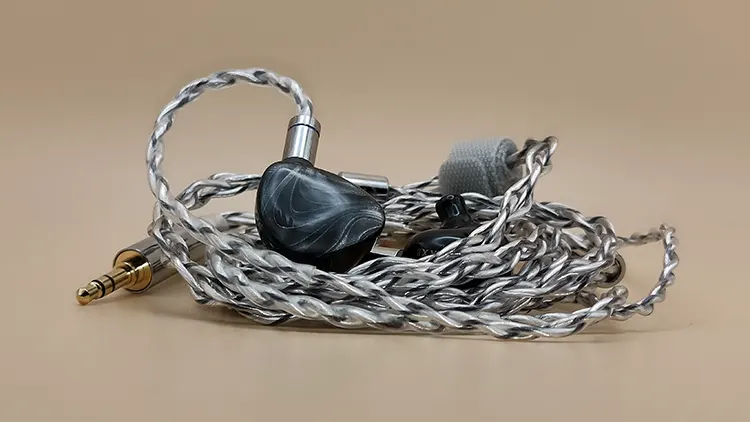

Characteristics
The TinHiFi P1 Max II is a single planar driver universal IEM with a 16 Ω rating and a sensitivity of 98 dB/mW at 1 kHz, making it relatively efficient but not a very sensitive IEM.
This is a new 14.2 mm diameter planar driver. It is housed in a dual set of N52 magnetic steel drivers, with a micron-thick diaphragm and a lightweight aluminum diaphragm coil.
Design
The TinHiFi P1 Max II uses a 3D printed resin housing for both the front plate and case and is available in black finish only.
The 3D printing was done by Hello gears Also, who you've probably heard of, as there are a lot of 3D printing for IEMs being done these days.
For the P1 Max II, they designed it with an in-ear structure. Its type of shape guarantees comfort even during prolonged use. It is lightweight and weighs only 3.8 grams.
The faceplate has a holographic effect in the right light, so there's a bit more depth to its appearance compared to the original P1. Its color is a mix of gray and silver with some shine.
As for the casing, there isn't much to see. It has two vents, one at the top and one near the mouthpiece. There is also a text printed on the top. The words TinHiFi P1 Max II are written in gold.
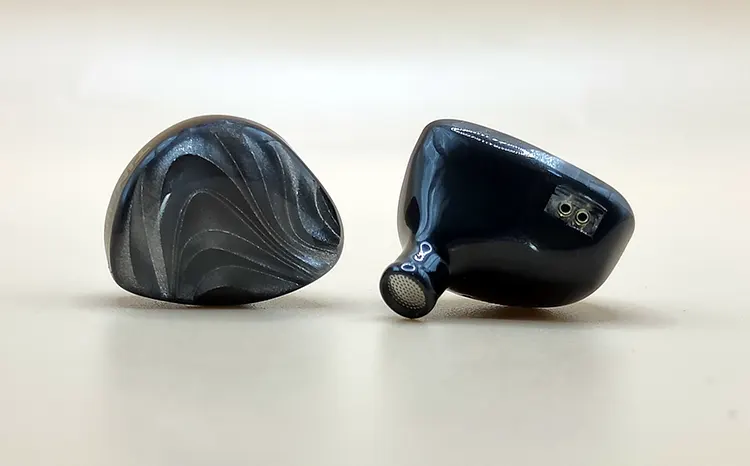

Comfort and isolation
In my experience, the comfort of the P1 Max II is mixed. Even though they have an in-ear design, there are parts that don't fit my ear well. They tend to poke my inner ear, making them uncomfortable to use.
I normally don't have issues with comfort because I have large ears, but the curved edges of the P1 Max II tend to squeeze my inner ear too much. Even with different advice, unfortunately the result is the same.
Isolation isn't great either. I couldn't get a proper seal to block out outside noise even at higher than usual volumes and with the tip rolling.
The TinHiFi P1 Max II also tends to slip out of my ear. Other IEMs don’t do this for me, but with this IEM, I can feel it moving around and need to push the earcups back in.
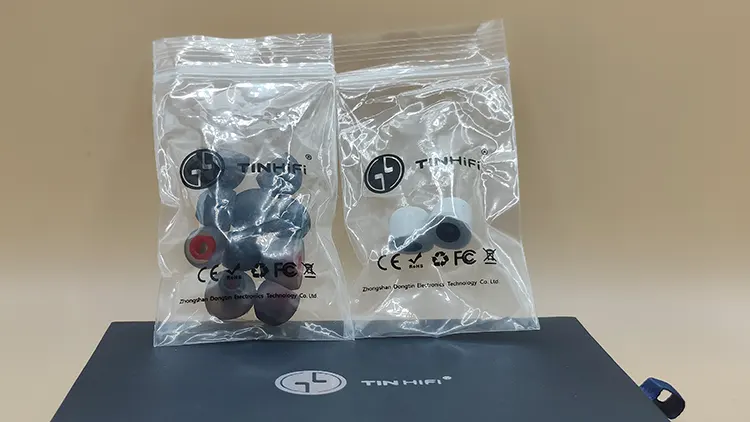

Tips
There are 2 types of tips included with the TinHiFi P1 Max II; a set of fairly common single flange silicone tips and a set of medium sized foam tips. Neither of them gave me the optimal sound experience with seal issues for both types.
The silicone tips have a powdery texture at first use. They work like other silicone tips, but they don't have a seal or a glossy feel. The foam tips reduce the high-end sound and also muffle the bass, which is unfortunately a reason in itself not to use them.
Using third party tips helped the most. I tried it with SpinFits CP100, 145, and 100+. I also tried DUNU S&S and Candy Tips with better comfort and insulation results.
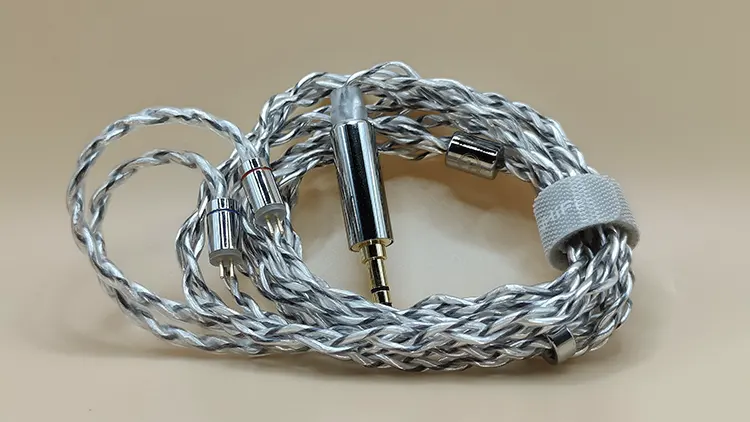

Serial cable
The TinHiFi P1 Max II has a great cable. It's an all-silver design with some black highlights. The cable also has a nice braid on the 4-core wiring. It doesn't stick or rub against your clothes, so it's good for everyday use as well.
There's also a chin slider and a Velcro closure with TinHiFi engravings, save for the 3.5mm jack which has a simpler finish.


Packaging and accessories
There's not much inside the box. I expected to receive the minimum accessories.
At the top end, you get the IEM, cable, tips, and paper guides. The paper guides were uniquely packaged this time in a strap. The TinHiFi P1 Max II uses filters, but there are no spares in the box. I couldn’t find a store to buy them either, so make sure you don’t lose them.
The biggest concern I had is that it doesn't have a carrying case. Competing in the market and offering a carrying case is a drawback, in my opinion.
Sound impressions
The following sound impressions were completed using a mix of the Fiio KA11 and the Colorfly CDA-M2 dongles.
Low
This is the part of the TinHiFi P1 Max II that surprised me the most. As a planar, I didn't expect the bass to be so plentiful. In the fewest words I can use, the bass just 'thumps'.
I didn't think I'd be able to enjoy bass with a flat, as it lacked the functional push and pull of a dynamic driver. However, with the P1 Max II, this simply isn't an issue. The bass is powerful and enjoyable without many limitations.
There is no loss of bass here. The bass is clean, non-intrusive and powerful. There is no lack of quality or quantity and that is the best part of the P1 Max II.
Media
The mids aren't as well done as the bass. This time it's a mixed bag.
What I enjoy most about the TinHiFi P1 Max II's midrange is how musical it sounds. It doesn't sound analytical or dry at all, but rather a fun performance.
The problem with the media is that it lacks weight. It sounds fine, especially with how powerful its bass is. It needs more midrange weight to fully complement its biggest strength. Fortunately, the media is not overwhelmed, so there is no problem in this regard.
The other issue I have is high frequencies and sibilance. It affects vocals quite obviously. I can hear the mids being affected by this sibilance. It's unusual, as the mids aren't boomy, so it's the highs that ruin it.


Triple
The highs of the TinHiFi P1 Max II are the worst part. For a flat, I wasn't expecting this kind of performance.
Normally I expect excellent detail recovery from a planar IEM, but that's not the case in this case. The P1 Max II's detail retrieval is only average. It simply doesn't measure up to its competitors in this regard. It lacks the stronger detail recovery that a planar IEM often needs.
The other thing is that there is some flexibility in the midrange and treble region. This IEM is certainly not for those who are sensitive to higher frequencies. This region is also tiring.
Staging and dynamics
The TinHiFi P1 Max II’s soundstage is good. It has enough width and depth to give the overall presentation a more immersive experience.
Imaging is well done. It is accurate enough to be able to get adequate imaging of the instruments and backing vocals at low and high pitches. As for dynamics, it is just not great. There is a huge difference between low and high volumes.
Sounds are missing when playing at lower volumes. It lacks a lot of punch to give the bass the power it needs. Playing at higher volumes is the best way to go. Everything sounds better as it should, but this can be a problem for those who listen at lower volumes.
Click on page 2 below to see my recommended combinations and selected comparisons.
Sharing is showing interest!







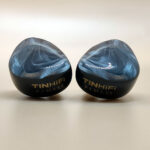

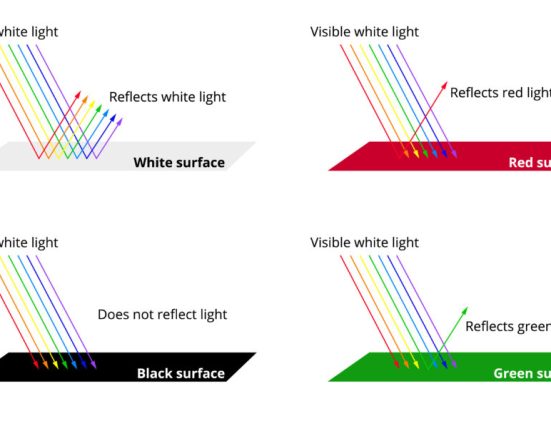



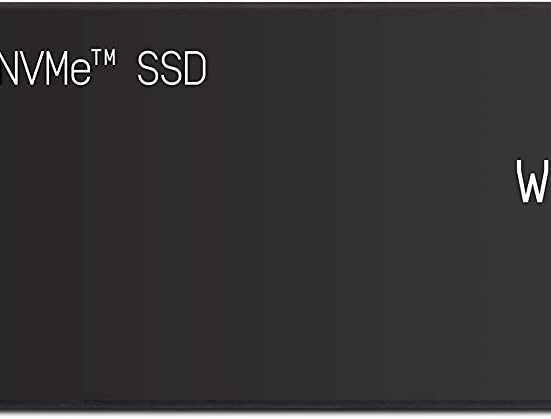
Leave feedback about this